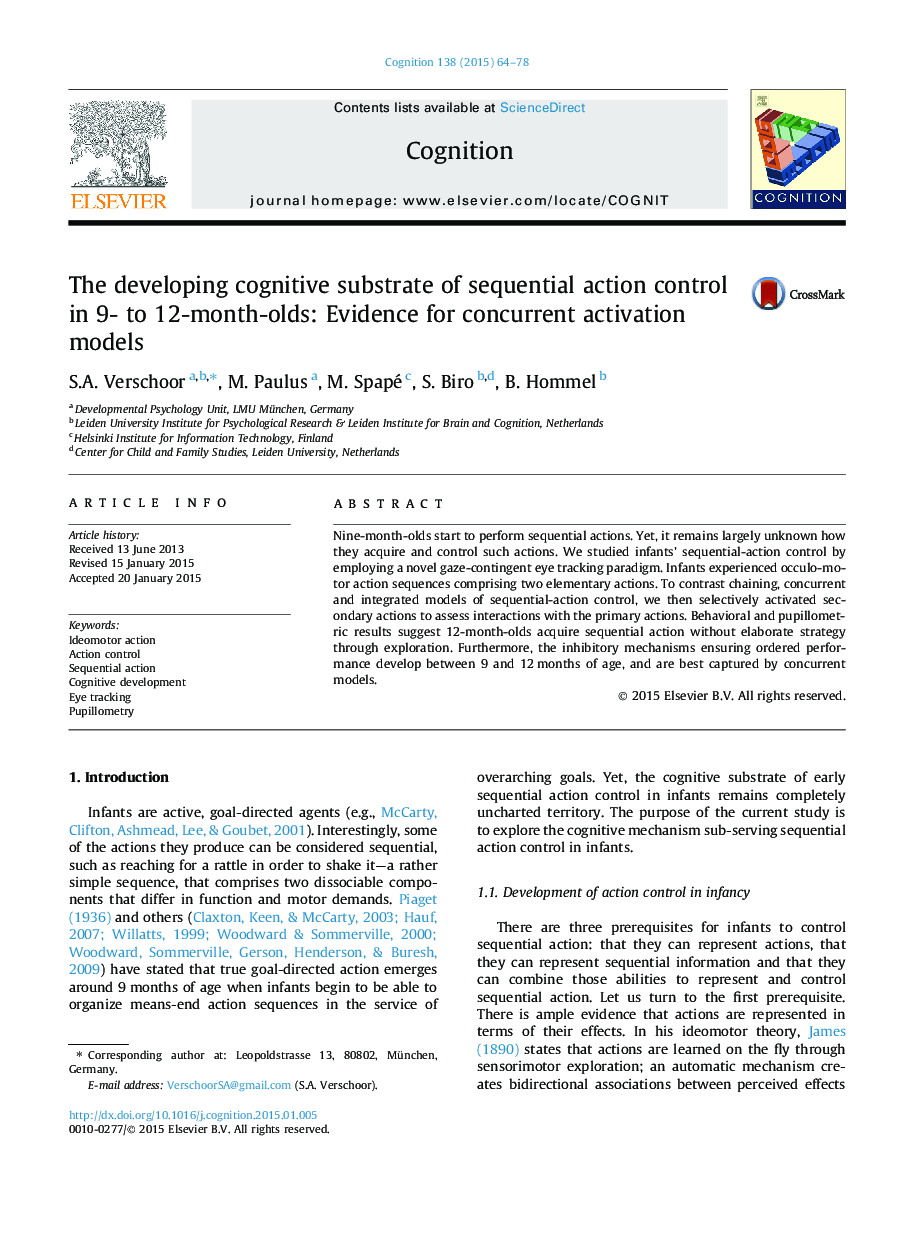| Article ID | Journal | Published Year | Pages | File Type |
|---|---|---|---|---|
| 7287180 | Cognition | 2015 | 15 Pages |
Abstract
Nine-month-olds start to perform sequential actions. Yet, it remains largely unknown how they acquire and control such actions. We studied infants' sequential-action control by employing a novel gaze-contingent eye tracking paradigm. Infants experienced occulo-motor action sequences comprising two elementary actions. To contrast chaining, concurrent and integrated models of sequential-action control, we then selectively activated secondary actions to assess interactions with the primary actions. Behavioral and pupillometric results suggest 12-month-olds acquire sequential action without elaborate strategy through exploration. Furthermore, the inhibitory mechanisms ensuring ordered performance develop between 9 and 12Â months of age, and are best captured by concurrent models.
Related Topics
Life Sciences
Neuroscience
Cognitive Neuroscience
Authors
S.A. Verschoor, M. Paulus, M. Spapé, S. Biro, B. Hommel,
